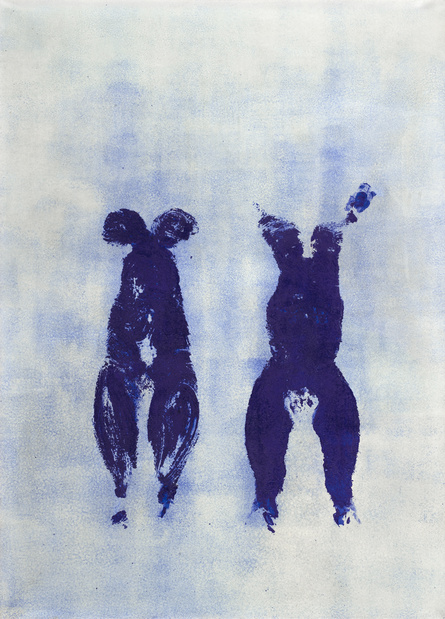Naissance d’un musée : le Louvre Abu Dhabi
Exhibition

Naissance d’un musée : le Louvre Abu Dhabi
Past: May 2 → July 28, 2014
Louvre Abu Dhabi is the result of an unprecedented initiative that laid the groundwork for a new type of cultural collaboration of unparalleled scope between two countries, centered on the creation of a national institution.
Born out of an intergovernmental agreement signed on March 6, 2007 between the United Arab Emirates and France, Louvre Abu Dhabi is the first universal museum in the Arab world. The museum will bring the Louvre name to Abu Dhabi and present works of historic, cultural, and sociological interest, both ancient and contemporary, from around the world.
The future museum shall not, in any way, be a copy of the French Louvre ; instead, it will be an original institution offering its interpretation of a universal museum, reflecting its own era and the local traditions of the host country. It will adopt an original way to present collections, combining loans from French collections and works from the Louvre Abu Dhabi’s own currently developing collection, on a rotating basis over ten years.
Its uniqueness shall be based on an overarching vision of artistic creation. Museums traditionally organize their collections by school, technique, and materials, and while this approach does highlight the unique characteristics of a series, it does nothing to show the influences, exchanges, and circulation of ideas and know-how. The Louvre Abu Dhabi’s unique museography will explore the connections between civilizations and cultures that may at first appear to be far separated by time and geography. Visitors will be guided through a chronological and thematic tour, traversing different periods and civilizations. The displays will pick out universal themes and common influences to illustrate the similarities that grow out of a shared human experience, beyond any geographical, historical, or cultural effect. As a result, Louvre Abu Dhabi will be a truly universal museum.
Jean Nouvel, a Pritzker Architecture Prize winner selected to design the museum, was inspired by the special features of the Saadiyat site : a virgin lagoon island, between sand and sea, shade and light. His design will offer future visitors a high-impact architectural and museum experience that fosters dialogue between cultures. Jean Nouvel wanted his building to have “a form that matches its function as a sanctuary for the most valuable works of art.”
The Louvre Abu Dhabi’s collection began with a blank slate and is growing gradually ; currently, it holds ancient and contemporary works from different countries.
These exceptional works include a gold bracelet with lion figures made in Iran nearly 3,000 years ago, an Italian gold and garnet fibula (brooch) from the 5th century BC, a superb Virgin and Child by Bellini, paintings by Jordaens, Caillebotte, Manet, Gauguin, and Magritte, a paper collage by Picasso never seen in the public domain, and nine canvasses by recently deceased American painter Cy Twombly. The collection does not only include pieces from the Middle East and the West : it also features works such as a soninké/djennenké figure from Mali, a dancing Shiva from India and an octagonal box from China that bring influence from other geographical regions. The collection is multidisciplinary and spans every medium : in addition to painting, sculpture, tapestry, gold work, paper collage, etc.
Louvre Abu Dhabi sets out to be the focal point of a dialogue between civilizations and cultures, symbolically continuing the age-old history of the Arabian Peninsula as a land of convergence and exchange. It must convey a spirit of openness and intercultural dialogue.
Abu Dhabi’s ambition is to lay an educational and cultural foundation. The museum will be located just an hour and a half from Indian, in the heart of the Middle East, in a capital of the modern world, the museum will be at a crossroads of civilizations. It will develop its own permanent collection targeting residents as well as regional and international visitors : a national art collection with something for everyone.
In the very first article of the intergovernmental agreement, Louvre Abu Dhabi states its ambition of becoming a place that “fosters dialogue between East and West.” This dialogue, embodied by the relationships between works of art, sculptures, and objects, will invite visitors to explore shared influences and surprising connections between different cultures around the world.
Opening hours
Every day except Tuesday, 9 AM – 6 PM
Late night on Wednesday, Friday until 9:30 PM
Lundi, jeudi, samedi, dimanche : fermeture des salles à partir de 17h30
Admission fee
Full rate €22.00
D’octobre à mars : le premier dimanche de chaque mois, l’accès aux collections permanentes est gratuit pour tous.
The artists
- Cy Twombly
-
Yves Klein
-
René Magritte




